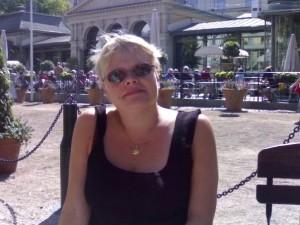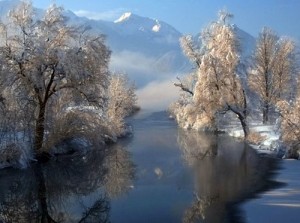
Paesaggi mozzafiato, natura incontaminata, aurore boreali ma non solo. La Finlandia è una nazione dotata di grande spessore culturale e, per approfondire questo importante aspetto, Cultura & Culture ha intervistato Riikka Lindholm, lettrice di lingua finlandese presso l’Università degli Studi di Napoli L’Orientale.
Dottoressa Lindholm cosa si intende per “cultura finnica”?
Comincerei con il sottolineare che per 700 anni la Finlandia ha subìto una fortissima influenza dalla dominazione svedese; dal 1809, e durante tutto l’Ottocento, la nazione era un granducato autonomo del impero russo fino alla piena indipendenza ottenuta nel 1917. Tutte queste vicissitudini hanno lasciato un segno molto forte all’interno della società finnica.
Quali sono i valori su cui si basa il popolo finlandese?
Se si considera il fatto che su un territorio di proporzioni molto vaste vi sono solo 5,414 milioni di persone si può comprendere come sia ovvio che, lo stile di vita che si conduce lì, ha reso le persone tendenzialmente più introverse, molto legate alla natura e alla terra, senza trascurare le dovute eccezioni.
Uno dei testi più famosi della Finlandia è il poema intitolato “Kalevala”. Di cosa parla?
La prima edizione del Kalevala risale al 1835, l’opera nacque come il risultato del lavoro di Elias Lönnrot sulle liriche popolari che egli stesso raccolse. Al di là dell’immenso valore che l’opera ebbe per la diffusione della lingua finlandese, il testo viene considerato come emblema dell’epopea nazionale. Il protagonista è un potente saggio, il capo spirituale della sua tribù che compie un viaggio negli inferi alla ricerca della conoscenza.

La Finlandia è un paese che si è urbanizzato solo molto recentemente e ancora oggi molti finlandesi amano vivere a stretto contatto con la natura e con la terra. Niente è meglio che vivere nella propria casetta in riva al lago o al mare e nel tempo libero sono in tantissimi a rifugiarsi nel verde. Mi sembra giusto evidenziare, però, che il territorio ha una morfologia molto mutevole nel passaggio da nord a sud e non è raro vedere che in Lapponia per migliaia di km non ci siano affatto delle abitazioni. In ogni caso, si può comunque affermare l’esistenza di una totale connessione con la natura e con gli spiriti che, secondo le antiche tradizioni, la animano come Tapio (dio del bosco) e Ahti (dio delle acque).
Quali aggettivi utilizzerebbe per definire la lingua finlandese?
La lingua finlandese è innanzitutto logica, possiede 15 casi, di cui 10 sono attivamente utilizzati, ed è una lingua agglutinante. Ad un primo impatto, può sembrare complessa, tuttavia basta scendere un po’ più in profondità per scoprire che non è poi così difficile.
Lei ha mai visto un’aurora borale? Potrebbe descriverla a parole?
A sud le aurore boreali non avvengono spesso, io l’ho vista tante volte e ogni volta mi meraviglio di tanta bellezza e mi capita di pensare inevitabilmente alla piccolezza dell’essere umano di fronte alla grandezza della natura . Durante lo scorso inverno il fenomeno si è verificato spesso e mi è capitato di vedere che c’erano tanti addetti, di nazionalità giapponese, pronti a segnalare il fenomeno naturale alle aspiranti madri convinte del fatto che l’aurora fosse portatrice di fertilità.
Quali sono i piatti tradizionali?
La cucina finlandese usa per lo più ingredienti semplici, poche spezie e tanti prodotti agricoli. Il pesce persico, il luccio, la scardova e l’aringa del Baltico si affiancano alla carne di renna e di alce. Nella zona orientale lo stufato di carne è il piatto più comune insieme al pane di segale ripieno. Nella zona centrale, invece, vengono molto usate le patate, cucinate in tanti modi diversi, così come avviene per le bacche. Tra i dolci tradizionali c’è la Pulla, molto simile alla briosce italiana.
Come si prepara la vodka Koskenkorva?
Questo tipo di distillato è molto particolare, originariamente era a base di patate mentre oggi lo si prepara con l’orzo. In Finlandia è una vera e propria istituzione!
Quali sono le festività nazionali più sentite?
La ricorrenza più popolare è quella di San Giovanni il 24 giugno. Per noi corrisponde al vostro Ferragosto, è il giorno più lungo dell’anno e da sempre ci sono numerose tradizioni legate a questa notte speciale. Oltre ai tantissimi falò, accompagnati da maestose grigliate, tutte le aspiranti mogli raccolgono 7 tipi di fiori diversi e li posizionano sotto il cuscino per dormirci su.
È vero che la sauna è considerata un simbolo della cultura finnica?
Assolutamente si! La sauna è presente quasi in ogni abitazione ed è un luogo per noi del tutto naturale. Non ha assolutamente una connotazione sessuale, anzi, è un posto perfetto per rilassarsi e meditare. Spesso, qualche buontempone approfitta di qualche ingenuo turista per traumatizzarlo con fortissime temperature, quasi come fosse un rito di iniziazione, ma, in linea di massima, la sauna è considerata come luogo di ritrovo e di aggregazione sociale.
L’immaginario collettivo è solito associare i paesi del nord Europa all’idea di elfi, nani, fate e folletti. Quanto appartengono queste creature alla Finlandia?
Se parliamo di 100 anni fa, la figura del folletto era tutt’altro che scherzosa. C’era una forte credenza nell’esistenza di queste piccole figure mitologiche! Oggi sicuramente molto meno che in passato eppure a Natale, che coincide con la festa pagana di fine raccolto, si è soliti lasciare dei cibi sul tavolo per i folletti per non inimicarseli e per propiziare abbondanza e prosperità economica.
Che tipo di musica si ascolta?
La musica è sicuramente uno dei motivi per cui tanti giovani si avvicinano alla lingua finlandese. Un genere oggi molto diffuso è il gothic metal ed è per questo che i fan di questo genere appaiono, in genere, un po’ estremi nel vestire e nel comportarsi. In ogni caso la musica è un’arte molto diffusa in Finlandia: c’è opera a Savonlinna, la musica da camera a Kuhmo e il jazz a Pori. Anche lo Stato finanzia volentieri il mondo delle 7 note, in quanto toccasana per lo spirito umano.
E per quanto riguarda il cinema e la letteratura?
I Finlandesi leggono tantissimo sia libri che giornali. Il nostro sistema bibliotecario è imbattibile! Chiunque può liberamente fruire di opere antiche e moderne, vedere film e ascoltare dischi di qualunque genere in qualsiasi momento. Tra gli autori più noti citerei Mika Waltari, autore di tanti romanzi storici negli anni 50, e alcuni scrittori contemporanei come Sofi Oksanen, Riikka Pulkkinen, Arto Paasilinna, Kari Hotakainen i cui libri sono stati tradotti in tutto il mondo. La cosa davvero unica sono le biblioteche itineranti che girano in tutti i paesini per promuovere e diffondere la cultura. Anche io quand’ero bambina, spesso aspettavo il pullman con la biblioteca ambulante e trascorrevo intere ore a leggere in mezzo al bosco. Per quanto riguarda il cinema, invece, sono tanti i cineasti emergenti e durante il recente Roma Nordic Festival ci sono stato alcuni lavori che hanno riscosso molti consensi tuttavia i fratelli Aki e Mika Kaurismäki, con la loro trilogia cinematografica, hanno riscontrato alcune critiche dovute al fatto che le loro opere hanno eccessivamente accentuato l’attitudine introversa del popolo finlandese.
A che punto è l’evoluzione del concetto di integrazione nel vostro Paese?
Negli anni ’80 il Presidente di allora Mauno Koivisto approvò una legge secondo la quale tutti coloro che si trovavano al di là del confine orientale, appartenuto alla Finlandia fino allo scoppio della seconda guerra mondiale, potevano rientrare in territorio finlandese a fronte della certificazione delle loro origini finniche. In questo modo si sono create tre principali comunità: la prima è quella dei russi, esistente dal 1700 circa, la seconda è quella degli estoni e la terza è quella dei neo ricchi russi che hanno acquistato vaste proporzioni di terra. A tutto ciò si aggiunge il forte flusso di immigrazione che ha interessato la Finlandia nell’ultimo cinquantennio: moltissimi rifugiati di guerra provenienti dal Vietnam e dalla Somalia hanno trovato accoglienza e rifugio in Finlandia. Oggi il concetto di integrazione è molto sentito in tutta la nazione anche se è innegabile il fatto che si tende ad accettare di più e più volentieri persone acculturate, poco problematiche e che soprattutto non vogliano esclusivamente sfruttare i numerosi sussidi concessi dallo Stato ai cittadini.
Che importanza ha la cultura in Finlandia e cosa fa lo stato per sostenerla?
Lo Stato tiene moltissimo allo sviluppo della cultura. Il sistema di alfabetizzazione è molto ben sviluppato e anche l’istruzione universitaria gode di un’attenzione particolare. Attraverso il CIMO (centro per la mobilità internazionale) viene incoraggiato lo scambio culturale. Ogni anno mandiamo dall’Italia delle persone che vanno lì per studiare, imparare e svolgere dei tirocini e anche dalla Finlandia arrivano docenti, studenti ed esperti per tenere delle lezioni, dei seminari e aiutarci nella diffusione della lingua e della cultura. Anche l’Ambasciata finlandese a Roma è molto attiva su questo fronte e, attraverso il sito www.cultfinlandia.it tutti gli italiani appassionati della cultura finnica possono tenersi costantemente aggiornati.
Raffaella Sbrescia
Translation by Tony Stanco
The secrets of Finnish culture
The first edition of the Kalevala dates back to 1835 , It was born the result of Elias Lönnrot’s work on popular on the lyrics that he had collected. Beyond the immense value that the work was for the spread of the Finnish language, the text is considered as an emblem of the national epic. The protagonist is a powerful essay, the spiritual leader of his tribe who takes a journey into the underworld in search of knowledge.
In the south the aurora borealis do not happen often. I’ve seen it many times and each time I marvel at such beauty and I happen to think inevitably to the smallness of the human being in front of the greatness of nature. During the past winter, this phenomenon has occurred often and I happened to see that there were so many people, of Japanese nationality, ready to report the natural phenomenon of the would-be mothers who believe that the aurora was the bearer of fertility.
The most popular one is that of St. John, on June 24. It could be compared to the Italian Feast of the Assumption,on August 15. It is the longest day of the year and there have always been many traditions associated with this special night. In addition to the many bonfires, and majestic grills, all the would-be wives collect 7 types of different flowers and place them under their pillow to sleep on it.
If we talk about a hundred years ago, the figure of the elf was anything but playful. There was a strong belief in the existence of these small mythological figures! Today certainly much less than in the past, and yet at Christmas, which coincides with the pagan feast at the end of harvest, it is customary to leave food on the table for the elves not to antagonize them and to propitiate abundance and prosperity.
The music is definitely one of the reasons why so many young people approach the Finnish language . The most used genre today is Gothic Metal and that’s why Its fans generally have quite an extreme look concerning their clothes and behave. Music is an art very popular in Finland, though and there is opera in Savonlinna, chamber music in Kuhmo and jazz in Pori. The Government is happy to finance the world of the seven notes, as good for the human spirit.